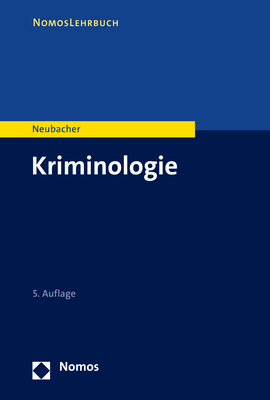
Critical Issues in Crime and Justice
SAGE Publications Inc (Verlag)
978-1-4833-5062-2 (ISBN)
- Titel erscheint in neuer Auflage
- Artikel merken
A comprehensive, provocative overview of the origins and present state of issues and perspectives in criminal justice and criminology from leading scholars in the field
In this important book of essays, leading scholars explore the gamut of topics in criminal justice and criminology, examining both historical and contemporary material to illustrate the past and present of each topic covered. Drawing on a wide range of sources, the book illustrates the breadth of research, policy, and practice implications in key areas of the field, such as crime theory, law enforcement, jurisprudence, corrections, and criminal justice organization and management. The coverage of concepts, insights, voices, and perspectives is geared toward students with a background in criminal justice or criminology courses to challenge them to synthesize what they have learned, to question standard interpretations, and to begin to create new directions and visions for their future careers as professionals in the field.
Mary Maguire is the associate dean of the College of Health and Human Services at California State University Sacramento where she previously served as a Professor and the Chair of the Division of Criminal Justice and the Director of the Center for Justice and Policy Research. Her research interests include moral panic and public policy, as well as issues related to the incarceration movement in the United States, including drugs, race, class and programs for those at risk for offending. Selected publications include: A False Sense of Security: Moral Panic Driven Sex Offender Legislation, Corrections in California: The California Department of Corrections and Rehabilitation, and The Prevalence of Mental Illness in California Sex Offenders on Parole: A comparison of Those Who Recidivated with a New Sex Crime Versus Those Who Did Not. In addition to Critical Issues in Crime and Justice, she has three editions of Annual Editions: Drugs, Society, and Behavior. She served as the Book Review Editor for Contemporary Justice Review and is the past President of the Western Society of Criminology. In addition to numerous student programs, Dr. Maguire started a Project Rebound site, a prison to university pipeline, at Sacramento State and continues to advance issues of justice and equity. Dan Okada is a professor in the Division of Criminal Justice at California State University Sacramento. He has professed criminal justice at Long Beach State University and Marist College (in Poughkeepsie New York). He is past editor-in-chief of Contemporary Justice Review and is a past president of Justice Studies Association. Both efforts promoting social, transformative, and restorative justice and peacemaking criminology. His work revolves around juvenile and restorative justice, while his play centers on doing as little damage to others as possible.
PART I: Criminal Justice and Criminological Paradigms
Chapter 1: Introduction: The Linearity of Contemporary Criminal Justice Thought: Perspective, Context, and Direction - Dan Okada and Mary Maguire
Chapter 2: The Importance of Ethics in Criminal Justice - Cyndi Banks
Police Ethics
Discrimination
Legal Ethics
Punishment
Correctional Ethics
Ethical Criminal Justice Policy Making
Analyzing Ethical Dilemmas
Conclusion
Discussion Questions
Chapter 3: Criminological Theory and Crime Explanation - Dan Okada
Science/Society/Law/Crime/Criminology
Micro-Level Analyses
Macro-Level Analyses
Conclusion
Discussion Questions
Chapter 4: Unleashing the Power of Criminal Justice Theory - Peter B. Kraska
The Power of Criminal Justice Theory for Our Discipline
Criminal Justice: A Worthy Object of Theorizing
Developing a Useful Theoretical Infrastructure
The Power of Theory to Transform Consciousness
The Power of Theory to Affect Public Explanations
Conclusion: Embracing Criminal Justice Theory
Discussion Questions
Chapter 5: Victimology - Leah E. Daigle
Introduction
The Typical Victimization and Victim
The Costs of Victimization
System Costs
Mental Health Consequences and Costs
Fear of Crime
Recurring Victimization
Theories of Victimization
Routine Activities and Lifestyles Theory
Structural Causes of Victimization
Caring for the Victim
Victim Remedies and Services
Summary
Discussion Questions
PART II: Offenses and Offenders
Chapter 6: Juvenile Delinquency - David L. Parry
What is Delinquency?
How Much Delinquency? Adolescent Development, Risk Factors, and Pathways to Delinquency
Conclusion
Discussion Questions
Chapter 7: Gender Matters: Trends in Girls’ Criminality - Meda Chesney-Lind
Crime Wave?
Delinquency: Gender Matters
Girls’ Crime, Girls’ Offenses
Girls’ Violence: When She Was Bad
Running Away: Girls Coping With Trauma and Abuse
Wild in the Streets: Girls, Drugs, and Alcohol
Shoplifting: You Shoplift as You Shop
Conclusion
Discussion Questions
Chapter 8: Race and Crime - Helen Taylor Greene
Definitional Issues
Theoretical Perspectives on Race and Crime
Contemporary Race and Crime Issues
Future Issues in the Study of Race and Crime
Discussion Questions
Chapter 9: Popular Culture, Media, and Crime - Richelle S. Swan
Introduction
Popular Theoretical Approaches to the Study of Popular Culture, Media, and Crime
Popular Methodological Approaches Used in the Study of Popular Culture, Media, and Crime
Important Research Themes in Studies of Popular Culture, Media, and Crime
Framing Gone Extreme: Moral Panics about Crime, Delinquency, and Popular Culture
Effects of Popular Culture and Media Consumption on Crime
Being Framed: The Skewed Representation of Social Groups in Crime, Media, and Entertainment
Mediating Oneself: Using Media and Popular Cultural Forms to Communicate Messages about Crime and Justice
Discussion Questions
Chapter 10: Crime and Economics: Consumer Culture, Criminology, and the Politics of Exclusion - Stephen L. Muzzatti
Introduction: A Spectre Is Haunting Criminology . . .
Reading the Profane: Theorizing Crime and Capitalism
Banality and Viciousness in Late Modernity
Youth and the Vicissitudes of Late Modernity
Consuming Crime and Culture
Late Modernity, Crime, and Pseudo-Pacification
Selling Crime, Marketing Transgression, and Commodifying Violence
Conclusion: Nothing to Lose but Our Chains
Discussion Questions
Chapter 11: Gangs, Serious Gang Problems, and Criminal Justice: What to Do? - James C. Howell and Megan Q. Howell
Introduction
Gang Definitions
Key Indicators of Serious Gang Activity
Contexts of Serious Gang Violence
Discussion of Program Implications
Discussion Questions
Chapter 12: Sex Crimes - Mary Maguire
Sex Crimes Defined
Theoretical Explanations
Criminal Justice Response to Sex Crimes
Conclusion
Discussion Questions
Chapter 13: Terrorism and the Criminal Justice System: Questions, Issues, and Current Applicable Law - Sharla J. “Kris” Cook and Timothy A. Capron
Introduction
Fighting Terrorism Effectively in a Constitutional Democracy
Surveillance and Detection
Detention and Treatment of Suspected Terrorists
Drone Strikes
Court Challenges
The Latest Developments
Discussion Questions
Chapter 14: Developments in Cyber Criminology - Johnny Nhan and Michael Bachmann
The Emergence of Cyber Criminology
Defining and Classifying Cybercrimes
The Internet Space and Jurisdiction
Policing and Social Control on the Internet
Security Versus Privacy
Cyber Rights and Cybercrime: The Case of Hacking
Methodological Challenges in Researching Cybercrime
Theoretical Challenges in Cybercrime Research
Conclusion: Toward a Conceptual Model of Cyber Criminology
Discussion Questions
Chapter 15: Comparative Criminology and Criminal Justice - Philip L. Reichel
Why Compare?
Comparative Criminology
Comparative Criminal Justice
Comparative Studies in the Coming Years
Conclusion
Discussion Questions
PART III: Policing and Law Enforcement
Chapter 16: A History of American Policing - Craig D. Uchida
The Roots of Modern Policing
Law Enforcement in the West
Forming the New Police in England
American Police Systems
Policing in the 19th Century
Police Work
Reforming the Police
Becoming Professionals
Technology Development
Turbulent Times: America in the 1960s
The Legacy of the 1960s
Community Policing
Conclusion
Discussion Questions
Chapter 17: Police Theory - John Crank, Dawn M. Irlbeck, and Connie M. Koski
Normative–Rational Theory
Institutional Theory
Conflict Theory
Postmodernism
Conclusion
Discussion Questions
Chapter 18: Contemporary Police and Society - Gennaro F. Vito
Introduction
The British Paradigm: Balancing Democratic Principles and the Military Model
Conclusion
Discussion Questions
Chapter 19: Police Organization and Administration - Thomas W. Nolan
Origins of the Structural Model of Police Organizations
Police Organization: The Militarization of the Police
Police Organization: Subculture, Ethos, and Milieu
Organization and Subculture: Initiation and Masculinism
Organizational Subculture and Moral Superiority
Police Organization: Autonomy and Authoritarianism
Police Administration and the Civil Service
Police Administration and Unions
Conclusion
Discussion Questions
PART IV: Policy and Jurisprudence
Chapter 20: Public Policy - Frank P. Williams III and Janice Ahmad
Public Policy: The Formal Version
Sources of Criminal Justice Policy
Public Policy—As It Is in Practice
The Use and Misuse of Public Policy
The Policy Implications of Public Policy
Conclusion
Discussion Questions
Chapter 21: American Courts - Cassia Spohn
Supreme Court Decisions and American Courts
The Sentencing Reform Movement
Specialized or Problem-Solving Courts: A Focus on Drug Courts
Conclusion: Policy Implications
Discussion Questions
Chapter 22: The Juvenile Justice System - Randall G. Shelden
Detention Centers
Special Issues Facing the Juvenile Justice System
The Racial Composition of Juvenile Institutions
Conclusion: The Future of the Juvenile Court
Discussion Questions
PART V: Corrections and Societal Response
Chapter 23: The Philosophical and Ideological Underpinnings of Corrections - Anthony Walsh and Ilhong Yun
What Is Corrections?
The Theoretical Underpinnings of Corrections
A Short History of Correctional Punishment
The Emergence of the Classical School
The Emergence of Positivism
The Function of Punishment
The Objectives of Corrections
The Past, Present, and Future of Corrections
Summary
Discussion Questions
Chapter 24: Community Corrections, Rehabilitation, Reintegration, and Reentry - Traqina Emeka and Marilyn D. McShane
Introduction
Probation: Progressive Reform and the Promise of Rehabilitation
Parole as Reward or Relief
Assessment and Prediction: Risk and Stakes
Worse Than Prison?
Reintegration and Reentry
Factors Correlated With Community Supervision Success and Failure
Ongoing Debates and Policy Implications
Discussion Questions
Chapter 25: Restorative Justice in Theory - Lois Presser and Kyle Letteney
What Is Restorative Justice?
Conclusion
Discussion Questions
Chapter 26: Garbage In, Garbage Out? Convict Criminology, the Convict Code, and Participatory Prison Reform - Alan Mobley
Mass Incarceration in America
Convict Criminology
The Convict Code
Factors Undermining the Convict Code/Formal Structure
A New Code
Discussion Questions
| Erscheint lt. Verlag | 15.1.2015 |
|---|---|
| Verlagsort | Thousand Oaks |
| Sprache | englisch |
| Maße | 177 x 254 mm |
| Gewicht | 840 g |
| Themenwelt | Recht / Steuern ► Strafrecht ► Kriminologie |
| ISBN-10 | 1-4833-5062-2 / 1483350622 |
| ISBN-13 | 978-1-4833-5062-2 / 9781483350622 |
| Zustand | Neuware |
| Informationen gemäß Produktsicherheitsverordnung (GPSR) | |
| Haben Sie eine Frage zum Produkt? |
aus dem Bereich



